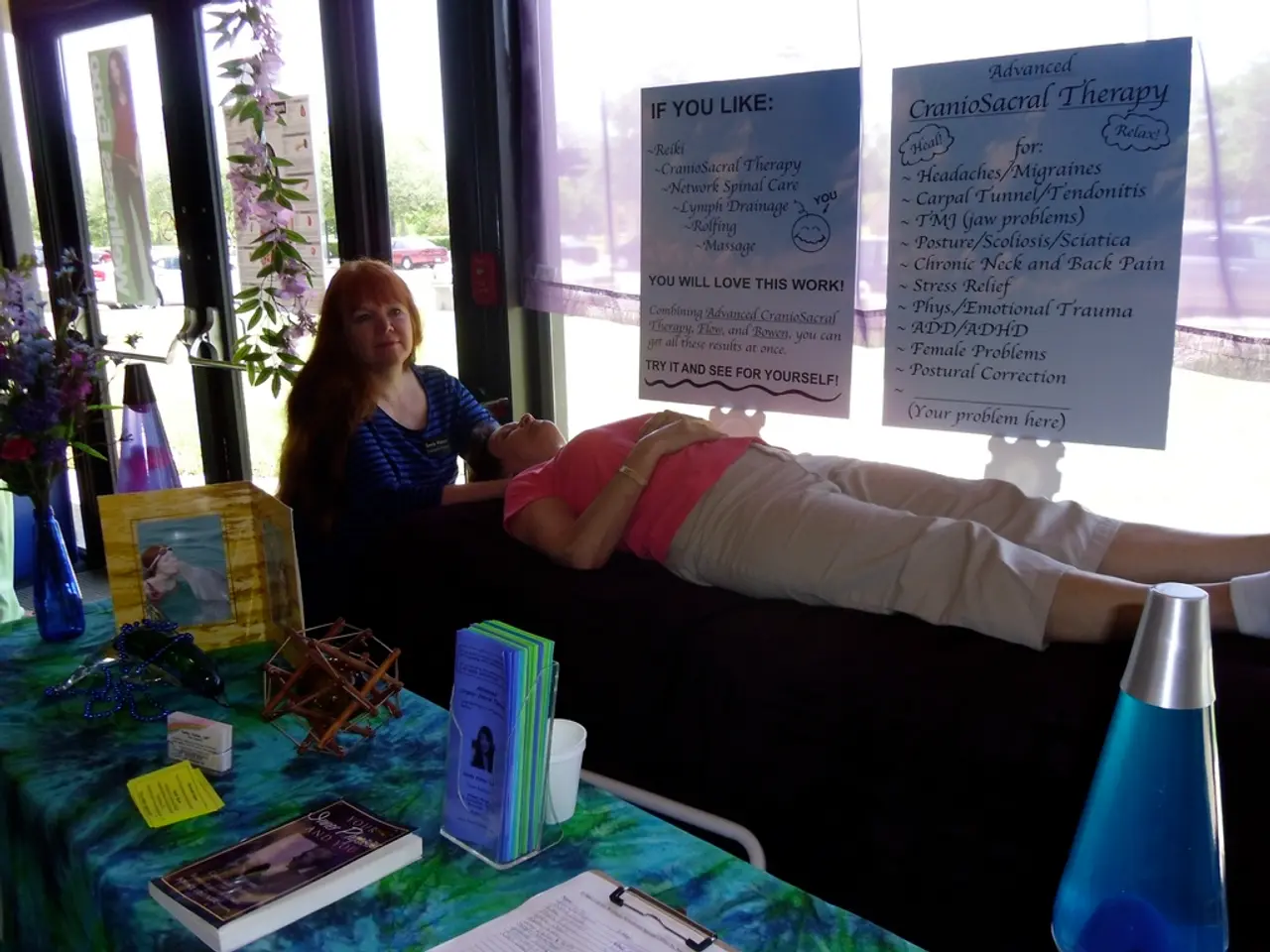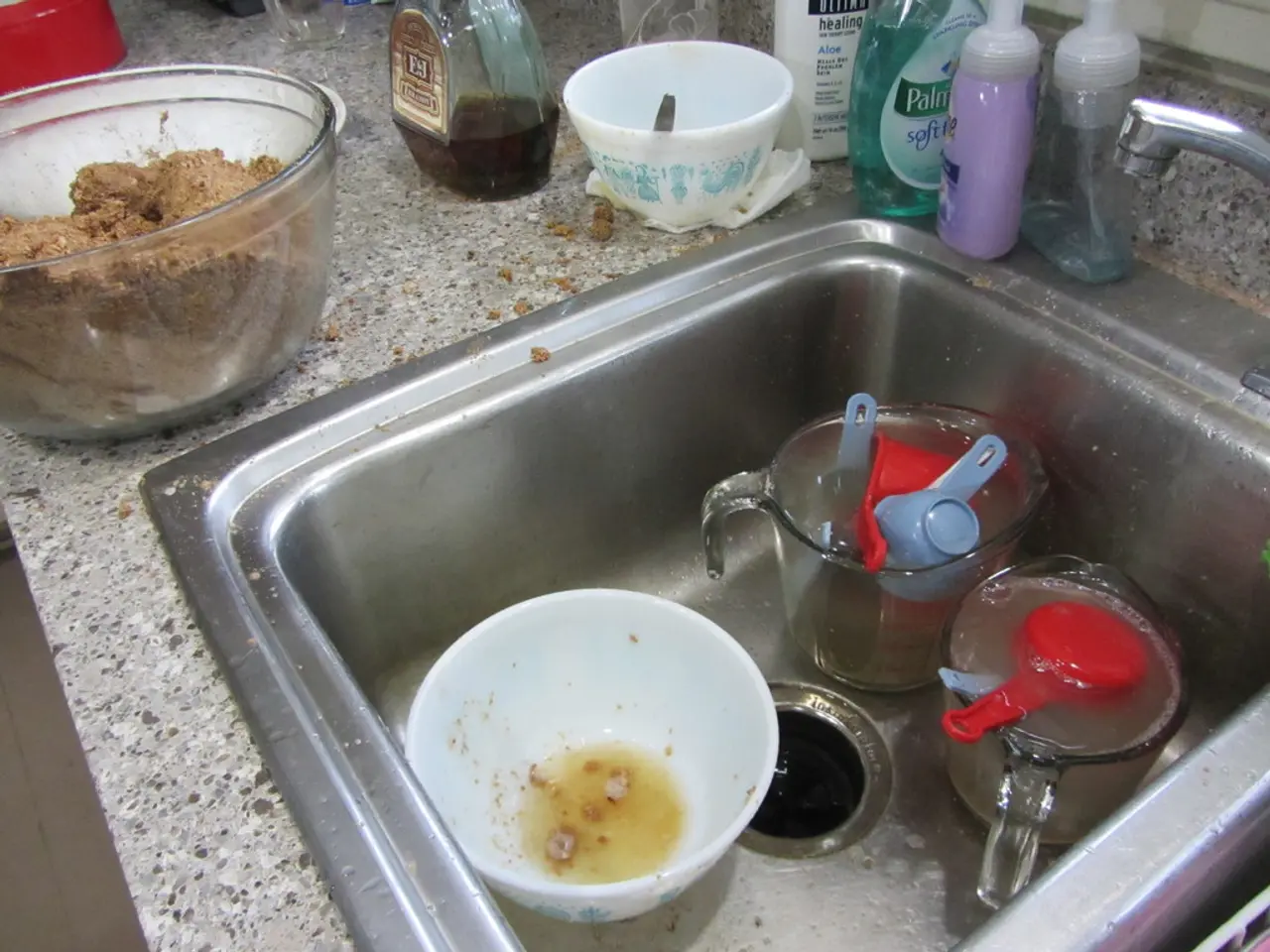Guidance for Transforming into a Fitness Coach for Stroke Victims
Strokes, a leading cause of disability worldwide, can have profound effects on a person's life. Whether it's an Ischaemic stroke, caused by a clot cutting off the brain's blood and oxygen supply, or a Haemorrhagic stroke, where a blood vessel in the skull bursts and bleeds into the brain, the impact can be severe.
For personal trainers looking to make a difference, specializing in stroke rehabilitation can be emotionally fulfilling and help change patients' lives. It's essential to understand the unique challenges stroke patients face and adapt their workout programs accordingly.
Adapting to Stroke Patients' Needs
When working with stroke patients, patience, compassion, and consideration are key. Communication may be affected due to aphasia or dysarthria, so trainers should adapt their approach to suit the individual's needs. Keep questions simple, provide direct instructions, eliminate distractions, and allow for extra time.
Exercise Techniques for Stroke Patients
The best exercise techniques for personal trainers working with stroke patients focus on improving gait, strength, cardiovascular fitness, and motor control.
Gait Training Exercises
Gait training exercises aim to relearn walking patterns and improve balance and coordination. These may include ankle dorsiflexion, straight leg raises, and walking practice with real-time feedback from therapists. Walking on varied surfaces can also improve safety and independence.
Range of Motion and Strengthening Exercises
Range of motion and strengthening exercises target affected limbs and improve muscle activation and joint mobility. Exercises like arm circles, elbow flexion/extension, and straight leg raises can be beneficial. Strengthening exercises for hips, thighs, and ankles are crucial to regain function after paralysis caused by stroke.
Aerobic Exercise Interventions
High-intensity aerobic training (HIIT or high-intensity continuous training) has been shown to significantly improve cardiorespiratory fitness (VO2peak), walking speed, and endurance. Such aerobic exercise is strongly recommended to enhance overall stroke recovery and cardiovascular health.
Aquatic Therapy and Modalities
Aquatic therapy provides muscle relaxation, pain relief, and safe resistance training due to water buoyancy, minimizing fall risks. Complementary modalities like electrical stimulation (e-stim) and massage can facilitate muscle activation, reduce spasticity, and prepare muscles for effective movement.
Repetitive Practice and Home Programs
Consistent repetition of prescribed exercises both during therapy sessions and at home promotes neuroplasticity and motor relearning critical to recovery after stroke.
In summary, an integrated approach combining gait training, strength and range of motion exercises, aerobic conditioning, and adjunct therapies such as aquatic therapy and electrical stimulation represents the best exercise techniques personal trainers can apply to support stroke patients safely and effectively. High-intensity aerobic exercise and task-specific gait training have especially strong evidence for improving functional outcomes post-stroke.
The Role of Nutrition in Stroke Recovery
A heart-healthy meal plan is crucial for stroke patients, especially those with high blood pressure, a leading cause of Haemorrhagic Strokes. This meal plan should feature foods rich in fibre, lean proteins, and healthy fats, while limiting sodium and processed foods.
Enrolling in a Level 4 Sports Nutrition course can expand your knowledge and skills in nutrition for stroke patients, ensuring you provide the best advice for your clients' recovery.
Preventing Strokes and Recurrence
Knowing the signs and symptoms associated with strokes can allow you to act fast and potentially save your clients' lives. If you notice any signs of stroke, call 999 immediately. These symptoms include sudden trouble seeing in one or both eyes, confusion, difficulty speaking, numbness or weakness in the arm, face, or leg, severe headache, trouble walking, or lack of coordination.
Monitoring blood sugar levels and blood pressure is also crucial to prevent damage to vessels and the occurrence of strokes. As a personal trainer for stroke patients, familiarize yourself with their medications, including anticoagulants, statins, and blood pressure medications.
Incorporating neuromuscular training into a client's exercise program can facilitate a client's recovery, and incorporating gait training exercises, aerobic exercises, strength training, and balance and core exercises can have mental health benefits, including reduced risk of depression, improved sense of worth, and relief of general feelings of stress.
Remember, no two stroke patients will have the same effects, ranging from mild to severe, depending on which part(s) of the brain is affected. Severe strokes can kill around 2 billion of the brain's 100 billion neurons, leaving only 98% of the brain functioning correctly, which can trigger issues with mobility.
In conclusion, with the right approach, personal trainers can play a crucial role in supporting stroke patients on their road to recovery. By understanding the unique challenges stroke patients face, adapting their workout programs to suit their medical needs, and incorporating the best exercise techniques and a heart-healthy meal plan, personal trainers can help their clients regain their strength, improve their mobility, and enhance their overall quality of life.
[1] Lang, D., & Dubey, R. (2016). Exercise in Stroke Rehabilitation. In Stroke Rehabilitation: A Multidisciplinary Approach (pp. 133-142). Springer, Cham.
[2] Mackey, S., & Warburton, D. E. (2017). Systematic review of the effects of exercise on physical and cognitive function in stroke. Journal of Neurology, Neurosurgery, and Psychiatry, 88(1), 103-112.
[3] Stroke Association. (2018). Exercise after Stroke. Retrieved from https://www.stroke.org.uk/sites/default/files/2018-07/Exercise%20after%20Stroke%20-%20Aug%202018.pdf
[4] Wade, D. T., & Levine, J. (2014). Exercise following stroke: a systematic review and meta-analysis of randomized controlled trials. Stroke, 45(11), 3012-3020.
- personal trainers focusing on stroke rehabilitation can significantly impact patients' lives and find emotional fulfillment in their work.
- Adaptation is crucial when working with stroke patients due to potential communication difficulties due to aphasia or dysarthria.
- The optimal exercise techniques for stroke patients aim to improve gait, strength, cardiovascular fitness, and motor control.
- Aquatic therapy, electrical stimulation, and massage can facilitate muscle activation, reduce spasticity, and promote safe and effective movement for stroke patients.
- Consistent repetition of prescribed exercises in and outside therapy sessions promotes neuroplasticity and motor learning essential for stroke recovery.
- A heart-healthy meal plan with foods rich in fiber, lean proteins, and healthy fats, and low in sodium and processed foods is critical for stroke patients, particularly those with high blood pressure.
- Being vigilant for signs and symptoms of strokes, such as sudden trouble seeing, confusion, difficulty speaking, numbness, severe headache, trouble walking, or lack of coordination, and immediately calling 999 can be lifesaving.
- Properly monitoring blood sugar levels and blood pressure, familiarizing yourself with clients' medications, and incorporating neuromuscular training into clients' exercise programs can prevent strokes and aid in recovery, enhancing overall quality of life.




